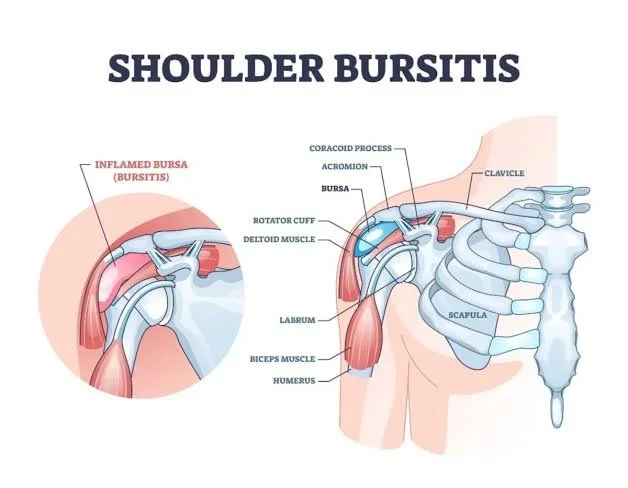Joint Health Matters: Let’s talk Bursitis
Has your Doctor told you that you have bursitis but not exactly sure what that means? We’ll explain what bursitis is, its potential causes and how to fix it!
WHAT IS BURSITIS?
In short, bursitis is the inflammation of a fluid filled sac that sits within joints and muscles and acts as cushions. The function of bursa is to reduce friction within the joints as we move as well as absorb certain amounts of pressure as we do our activities of daily living and exercise. Some of the most common cases of bursitis we see in the clinic are shoulder, hip and knee bursitis. There are more anatomical names for these but we won’t get into that as it may become confusing.
WHAT CAUSES BURSITIS?
The main cause for bursitis that you may hear is overuse. Although this is one of the main causes, we need to consider other factors as well. Overuse is essentially doing repetitive movements causing irritation to the bursa; another cause for bursitis is trauma. Sudden impact such as a fall can compress the bursa and cause acute inflammation.
There are certain postures that can put someone more susceptible for developing bursitis. As noted previously, any type of repetitive compression can irritate a bursa. Let’s use the shoulder as an example.
Someone who is constantly slouching or has a forward shoulder position puts the shoulder in a disadvantage as it puts more pressure on the shoulder bursa, especially as they use their arms for daily things. Infection of the bursa is also something to take note of. This requires care from your GP as you may need antibiotics or require aspiration of the fluid to reduce inflammation and evaluate the type of infection you have. This type of bursitis is accompanied with warmth at the site, redness, fever and a general feeling of being sick. So make sure you see your GP if you suspect any of these symptoms.
If you’re someone that is suffering from bursitis right now, have a think about which category you may fall in!
WHEN WILL IT GO AWAY?
Bursitis can take up to 5 months for complete recovery. However, there are cases where pain can settle within a few weeks with physiotherapy/chiropractic treatment and other conservative treatments. The recovery time is dependent on the activity you do. If you keep aggravating the bursa, the longer it will take to recover.
HOW CAN I FIX IT?
There are a few things you can do to aid the recovery of your bursits. We’ll look at the conservative options first:
1. Physiotherapy or chiropractic care
a. A variety of manual therapy techniques will be implemented to reduce the pressure on the bursa and therefore reduce the pain
b. Secondly, we will give you exercises to correct and strengthen any movements that are irritating the bursa
c. We will assist in modifying movements that are aggravating
2. Anti-inflammatories
a. Prescribed by your GP if they believe you require it
3. Ice
a. Can help with inflammation reduction
4. Rest
a. Temporarily resting from the movements that are aggravating
What happens when conservative treatment doesn’t help?
In cases where conservative care does not help, the GP may refer you for a cortisone injection. As allied health professionals, we usually recommend trialling conservative care for at least 4 weeks consistently before considering invasive procedures.

